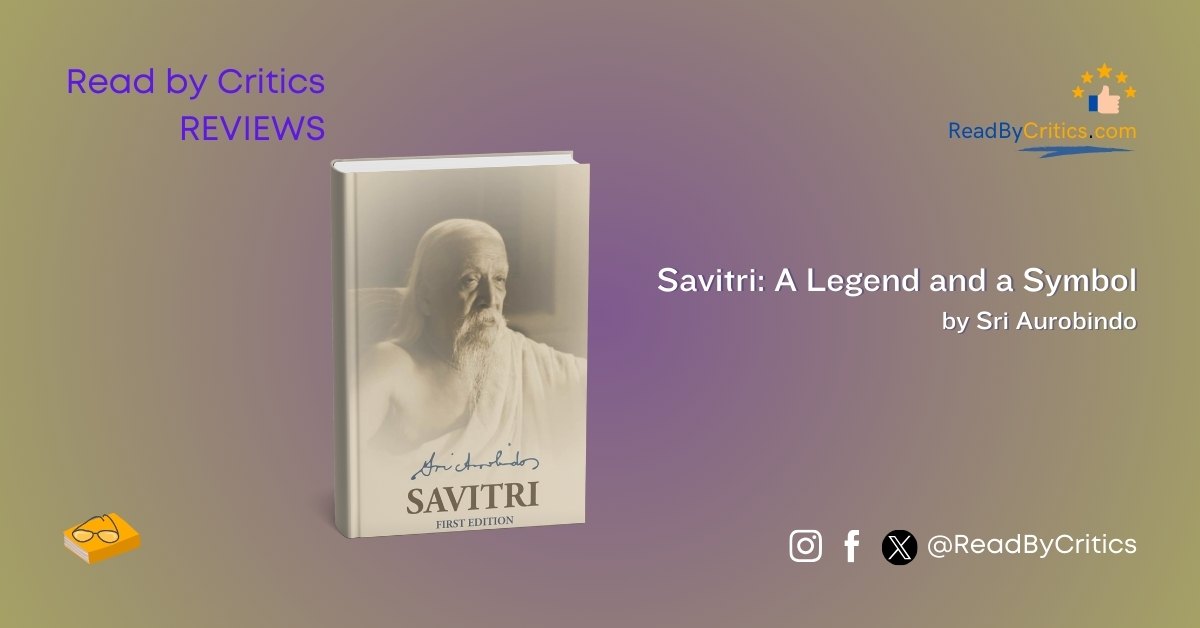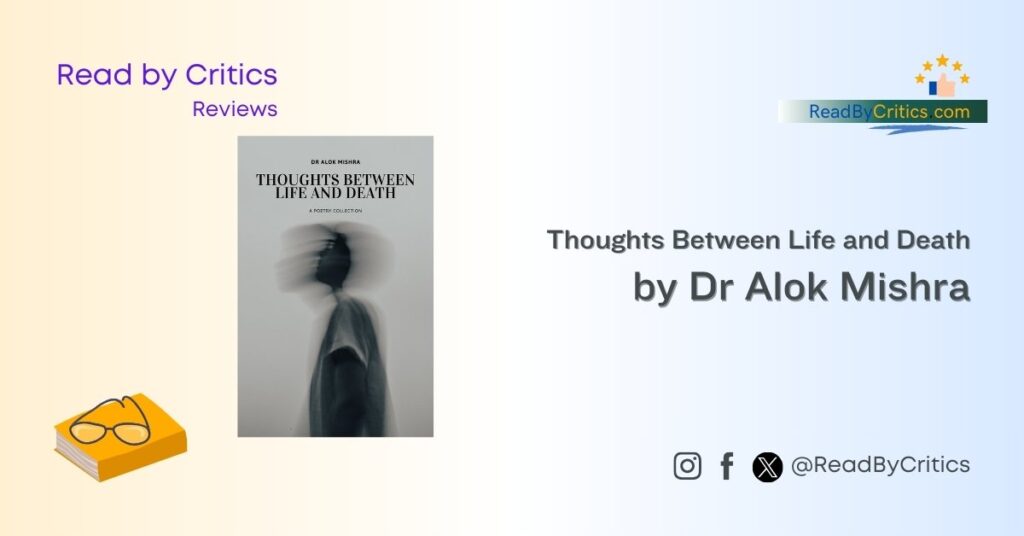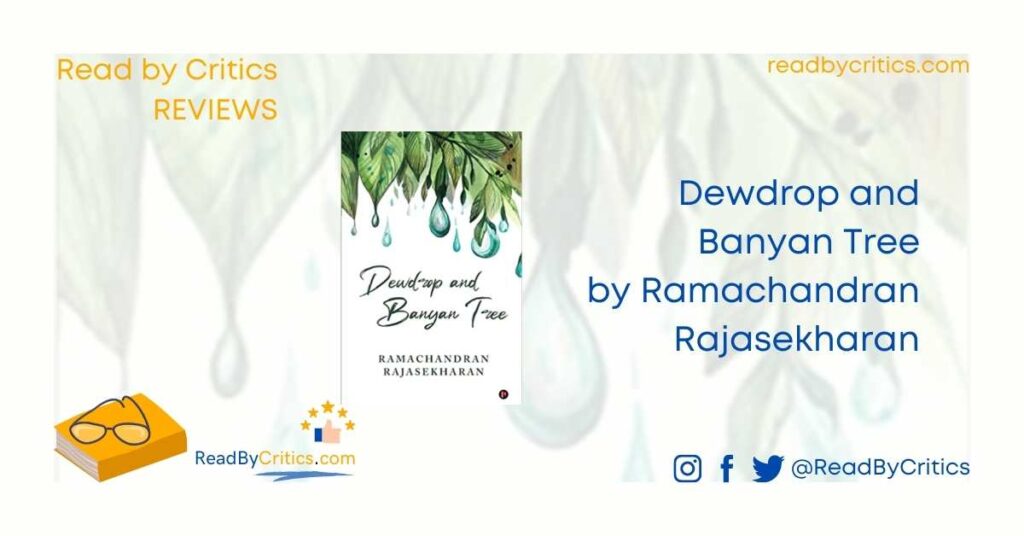Sri Aurobindo’s Savitri: A Legend and a Symbol is a monumental achievement in spiritual and epic poetry. This work transcends mere literary form to become a living embodiment of yogic vision and cosmic revelation. Composed in blank verse of extraordinary rhythmic power and lyrical intensity, this 24,000-line epic reimagines the ancient Mahabharata tale of Savitri and Satyavan as an allegory for humanity’s evolutionary destiny. What begins as a retelling of the princess Savitri’s battle with Death to reclaim her beloved transforms into a vast symbolic journey through the planes of consciousness, where every image, character and incident becomes a doorway to metaphysical realisation. The poem’s sheer scale is awe-inspiring – its three-part structure moves from the terrestrial to the celestial to the supramental, mirroring Sri Aurobindo’s integral yoga philosophy of spiritual ascent. Yet for all its philosophical depth, Savitri remains profoundly poetic, its language shimmering with revelatory power as when describing dawn as “a young goddess luminous and pure” or Death as “a shadow from the dim Inane.” The characters are not merely mythological figures but living symbols – Savitri herself becomes the incarnate Divine Mother battling against cosmic ignorance. At the same time, Satyavan represents the human soul bound by mortality yet destined for immortality.
Savitri’s dynamic vision of transformation is unique among spiritual epics – this is no static allegory but a living map of consciousness evolution. When Sri Aurobindo describes Savitri’s confrontation with Death in Book X, the verse seems to break beyond usual linguistic constraints, achieving what he called “mantric” potency where sound and meaning fuse into transformative knowledge. The famous “Book of Fate” passage, where Savitri challenges the fixed laws of destiny, contains some of the most electrifying poetry in English literature, its blank verse attaining almost Vedic resonance. Yet equally remarkable are the quieter psychological passages where human emotions are rendered with exquisite sensitivity – the description of Satyavan’s parents, Dyumatsena and Savitri’s inner struggles, reveals Sri Aurobindo’s profound understanding of the human heart. The poem’s stylistic range is breathtaking, from sublime mystical visions to tender domestic scenes, philosophical discourses, and apocalyptic battles between cosmic forces.
Critics have compared Savitri to Dante’s Divine Comedy and Milton’s Paradise Lost, but it surpasses these in its radical evolutionary optimism. Where traditional spiritual epics culminate in transcendent escape from the world, Sri Aurobindo’s transforms the world, what he termed the “life divine”, descending into matter. This gives the poem an urgent contemporary relevance; its vision of human potential speaks directly to our modern spiritual crisis. The text demands – and rewards – slow, meditative reading, as each line is dense with yogic insight. Specific passages, like the magnificent opening invocation to the Supreme Goddess or the devastating beauty of Satyavan’s death scene, leave an indelible imprint on the reader’s consciousness. While its formidable length and metaphysical complexity may daunt casual readers, those who persist discover a work that doesn’t merely describe spiritual experience but transmits it through the alchemy of poetic speech. More than literature, Savitri is a yogic practice encoded in verse, a bridge between human and divine creativity. In an age of fragmented poetry, it stands as a reminder of the epic’s original purpose – to be a vehicle of collective awakening, a “legend” simultaneously a living “symbol” of humanity’s highest possible future.
The sheer linguistic ambition of Savitri places it among the most daring poetic experiments of the 20th century. Sri Aurobindo crafts a unique English that is modern and archaic, infusing the language with Sanskritic cadences and a mantric quality that seems to bypass the intellect and speak directly to the soul. His mastery of rhythm transforms the blank verse form into something incantatory—when describing Savitri’s tapasya (spiritual austerity), the lines themselves seem to accumulate power through repetition and sonic resonance, enacting the yogic discipline they portray. The poem’s lexicon is equally remarkable, merging Renaissance-era English with Vedic terminology (“sun-eyed children of a marvellous dawn”) in ways that expand the possibilities of poetic diction. This linguistic alchemy serves a greater purpose: to create what Sri Aurobindo called “the future poetry of the Overmind,” a vehicle capable of expressing supramental consciousness in human speech. Passages like the magnificent “Hymn to the Goddess of the Infinite” demonstrate this visionary language at its most potent, where sound and meaning fuse into a medium of revelation rather than mere description.
On a structural level, Savitri achieves an extraordinary synthesis of Eastern and Western epic traditions. While following the basic narrative frame of the Mahabharata legend, Sri Aurobindo incorporates elements from Homeric epic (the extended divine invocations), Dantean allegory (the journey through planes of being), and even modernist stream-of-consciousness techniques. The poem’s twelve books mirror the ancient Indian tradition of parvas (epic books) and the symbolic progression of a soul’s journey through the zodiac of spiritual transformation. Particularly innovative is how Sri Aurobindo handles time—mythological past, historical present, and evolutionary future coexist simultaneously, as when Savitri’s struggle suddenly expands into a cosmic battle determining the fate of cycles of civilisations. This temporal fluidity reflects the yogic perception of time as a field of consciousness rather than linear progression. The epic’s closing movement, where personal victory becomes the seed for global transformation, offers a radical reimagining of traditional epic closure—not the founding of a city or dynasty, but the dawn of a new species-consciousness. In this sense, Savitri fulfils Sri Aurobindo’s declaration that true epic poetry must be “a revelation of the secret of the self and the universe.”
Sri Aurobindo’s Savitri is not merely an epic poem but a luminous testament to India’s spiritual and intellectual grandeur, a work that, as Alok Mishra asserts, “projects a global vision while remaining deeply rooted in Indian wisdom.” It is a monumental fusion of poetic brilliance and yogic revelation, where the ancient tale of a devoted wife’s triumph over Death transforms into a sweeping allegory of humanity’s evolutionary potential. Mishra rightly emphasises that Savitri is far more than a mythological retelling—it is a “mosaic of the unending flow of the Indian thought process,” weaving together philosophy, metaphysics, and the relentless pursuit of knowledge into a mantric tapestry that resonates across cultures. The poem’s profound Indianness—its celebration of satitva (feminine power), its defiance of cosmic inevitability, and its vision of a marriage that transcends mortality—offers the world a unique perspective, where devotion and intellect, tradition and transformation, coexist in dynamic harmony. Unlike Western narratives that often depict women as victims of divine whims, Savitri elevates the feminine principle to its highest form: Shakti. This cosmic force challenges even Yama, the god of death. Through its blank verse majesty and visionary depth, the epic bridges the ancient and the modern, inviting global readers to witness what Mishra calls the “fine blend of the ancient and the contemporary” that defines India’s enduring legacy. As both a literary masterpiece and a spiritual manifesto, Savitri secures Sri Aurobindo’s place, as Mishra notes, on the “highest pedestal among Indian English poets,” gifting the world an epic that is as much a call to transcendence as it is a celebration of the indomitable Indian spirit.
Parakashtha for ReadByCritics
…




